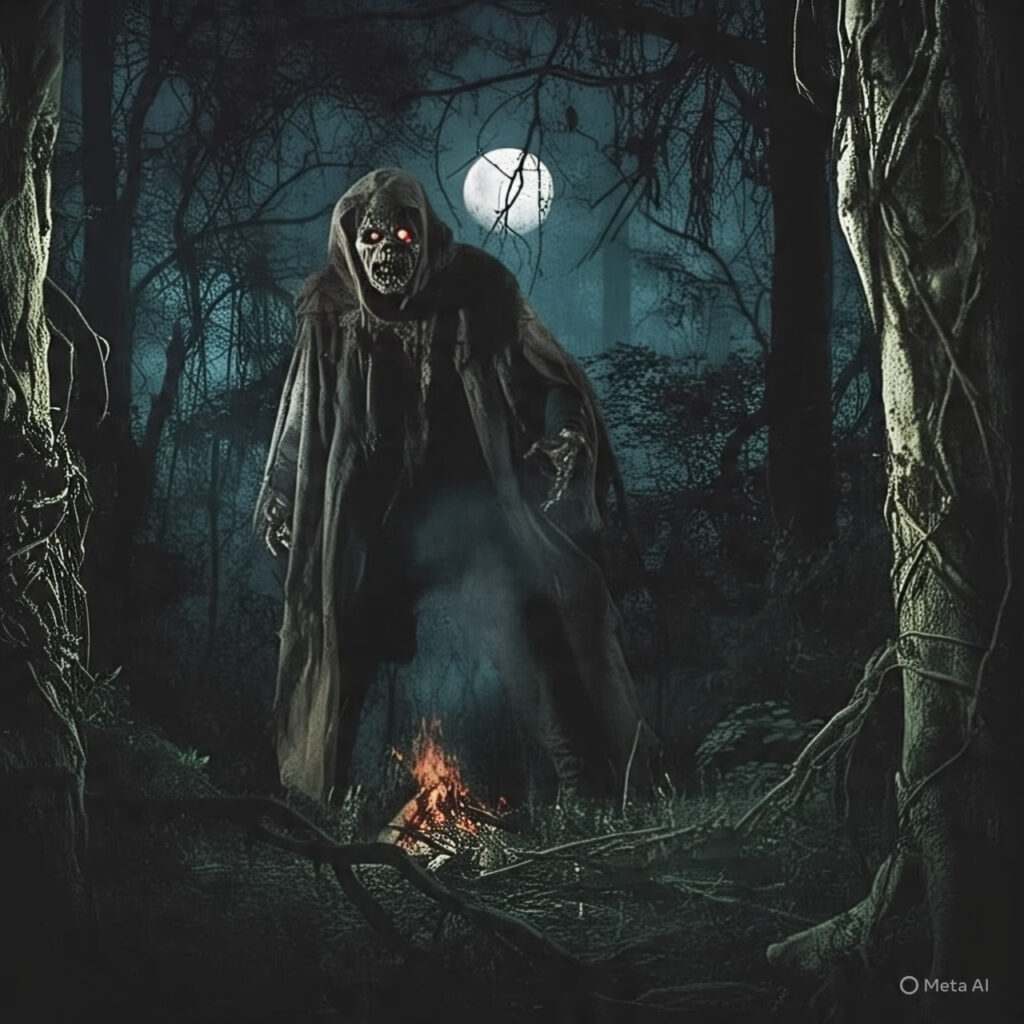
From spine-tingling classics to modern psychological thrillers, horror movies have captivated audiences for generations. The genre, often dismissed as simple scare fare, is far more complex and deeply rooted in human psychology and cultural expression. Whether you’re drawn to the adrenaline rush, the mystery, or the monsters, horror offers something unique that no other genre can.
In this article, we’ll explore the history, subgenres, cultural significance, and psychological appeal of horror movies, followed by frequently asked questions to deepen your understanding of why we keep coming back for more.
The Origins and Evolution of Horror Movies
The Birth of Horror on Screen
The history of horror movies dates back to the early 20th century. Silent films like Nosferatu (1922) and The Cabinet of Dr. Caligari (1920) laid the groundwork for visual horror. These early films borrowed heavily from Gothic literature and folklore, establishing key tropes like haunted houses, vampires, and mad scientists.
The Golden Age: 1930s to 1950s
Universal Studios defined the Golden Age of horror with iconic films like Dracula (1931), Frankenstein (1931), and The Mummy (1932). These movies introduced audiences to the concept of the “monster movie” and made horror a staple of cinema.
The Psychological Shift: 1960s to 1970s
With Alfred Hitchcock’s Psycho (1960), the horror genre shifted focus from external monsters to internal fears. This era brought more psychological depth to characters and stories. Films like The Exorcist (1973) and The Texas Chain Saw Massacre (1974) pushed boundaries and explored themes of religion, mental illness, and family dysfunction.
The Slasher Boom and Beyond: 1980s to 1990s
The 1980s saw the rise of slasher films like Halloween, Friday the 13th, and A Nightmare on Elm Street. These horror movies emphasized gore, suspense, and often featured a final girl—a lone survivor who faces the killer in the climax. The 1990s brought self-aware films like Scream (1996), which satirized horror tropes while delivering genuine scares.
Modern Horror: 2000s to Present
Contemporary horror movies are more diverse and experimental. Films like Get Out (2017), Hereditary (2018), and The Babadook (2014) explore complex social themes alongside traditional scares. Today’s horror landscape includes everything from found footage (Paranormal Activity) to elevated horror (Midsommar, The Witch), proving the genre’s capacity for reinvention.
Why Do We Love Horror Movies?
Adrenaline and Excitement
Horror movies provide a safe environment to experience fear. The brain releases adrenaline, endorphins, and dopamine during a scary movie, resulting in a “high” similar to what thrill-seekers experience.
Catharsis and Emotional Release
Watching horror movies allows people to confront and release their fears in a controlled setting. For many, it’s a form of emotional cleansing, helping to cope with anxiety and stress.
Social Bonding
Whether it’s watching with friends or discussing the latest scare-fest online, horror fans form tight-knit communities. Shared scares foster social bonds and give people a sense of connection.
Cultural Reflection
Horror often mirrors societal anxieties. For example, Cold War fears birthed radioactive monster films, while modern horrors may explore themes like surveillance, pandemics, and systemic racism.
Popular Subgenres of Horror Movies
Slasher
Characterized by a killer stalking and killing a group of people, often with a bladed weapon. Examples include Halloween and Scream.
Supernatural
Deals with ghosts, demons, and otherworldly entities. Classics like The Conjuring and Poltergeist fall into this category.
Psychological
Focuses on mental instability and internal fears. Films like Black Swan and The Shining are psychological horror masterpieces.
Found Footage
Uses amateur-style camera work to simulate real events, as seen in The Blair Witch Project and REC.
Body Horror
Explores the grotesque transformation or mutilation of the human body, such as in The Fly and Tusk.
Folk Horror
Centers around rural settings, ancient traditions, and pagan rituals. Notable examples include The Wicker Man and Midsommar.
The Impact of Horror Movies on Pop Culture
Horror movies have significantly influenced fashion, music, art, and literature. Characters like Freddy Krueger, Jason Voorhees, and Pennywise the Clown have become pop culture icons. Halloween costumes, video games, haunted house attractions, and merchandise all thrive on horror fandom.
Moreover, horror’s visual language—such as creepy soundtracks, jump scares, and ominous lighting—has permeated other genres like thrillers and dark comedies.
Psychological and Physiological Effects
Fear Conditioning
Horror films exploit basic human fears: darkness, death, isolation, and the unknown. Over time, viewers can become conditioned to react to specific stimuli (e.g., a creaking door or eerie music).
Sleep Disruption and Anxiety
While many enjoy horror movies, they can trigger nightmares, insomnia, and heightened anxiety in sensitive individuals. It’s essential to understand your own tolerance level before diving into more intense content.
Empowerment Through Survival
Strangely enough, horror can be empowering. Seeing characters survive horrific circumstances can instill a sense of resilience and inspire viewers to face their own fears.
Iconic Horror Directors and Their Legacy
Alfred Hitchcock
Known as the “Master of Suspense,” Hitchcock revolutionized the genre with Psycho and The Birds, introducing psychological depth and tension.
Wes Craven
Creator of A Nightmare on Elm Street and Scream, Craven masterfully blended horror with satire and social commentary.
John Carpenter
Best known for Halloween and The Thing, Carpenter’s minimalistic style and haunting scores have left a lasting impact on the genre.
Jordan Peele
With Get Out and Us, Peele brought a new wave of socially conscious horror that resonates with modern audiences.
Horror Movies Around the World
Horror is not limited to Hollywood. Countries across the globe have their own take on the genre:
- Japan: Known for psychological and supernatural horror. Films like Ringu and Ju-On influenced Hollywood remakes.
- South Korea: Combines horror with drama and social critique, as seen in The Wailing and Train to Busan.
- Italy: Famous for giallo films—a blend of murder mystery and slasher, like Suspiria by Dario Argento.
- India: Horror is often mixed with folklore and music, with films like Tumbbad standing out in recent years.
The Future of Horror Movies
With the rise of streaming platforms, independent filmmakers now have unprecedented access to audiences. This has led to a renaissance in indie horror, often more daring and diverse than mainstream offerings.
Technologies like VR and immersive theater are also shaping the future of horror experiences. Interactive horror games and AI-generated storylines could redefine how we consume horror.
Frequently Asked Questions About Horror Movies
What makes a good horror movie?
A good horror movie balances suspense, atmosphere, and storytelling. It doesn’t rely solely on jump scares but creates a lasting sense of dread. Strong character development and an original concept also contribute to a memorable film.
Why do people enjoy watching horror movies?
Many people enjoy the adrenaline rush, the challenge of facing fears, and the emotional release that horror provides. It also offers a safe way to explore taboo subjects and societal fears.
Are horror movies bad for your mental health?
Not necessarily. While some individuals may experience anxiety or sleep issues, many people find horror cathartic or even therapeutic. However, it’s important to know your limits and avoid overly disturbing content if you are sensitive.
What’s the scariest horror movie of all time?
This is subjective, but many lists often include The Exorcist, Hereditary, The Shining, and Paranormal Activity among the scariest. What frightens one person might not scare another.
Are horror movies appropriate for kids?
Most horror films are not suitable for children due to violence, disturbing imagery, and mature themes. However, there are family-friendly horror films like Coraline, Monster House, and Goosebumps for younger audiences.
Why do horror movies often reflect societal issues?
Horror acts as a mirror to society’s collective anxieties. Whether it’s about technology, politics, or identity, horror can express complex fears in symbolic and visceral ways, making it a powerful tool for commentary.
What are “elevated” horror movies?
“Elevated horror” refers to films that blend traditional scares with deep psychological, philosophical, or social themes. Examples include The Witch, Midsommar, and The Babadook. These movies often emphasize character and atmosphere over gore.
Can horror movies be funny?
Yes! Horror-comedies like Shaun of the Dead, Tucker & Dale vs. Evil, and The Cabin in the Woods use satire and parody to blend fear with humor, creating a unique viewing experience.
Final Thoughts: The Timeless Power of Horror Movies
Horror movies are far more than a collection of screams, shadows, and gore. They are emotional rollercoasters, cultural artifacts, and psychological puzzles rolled into one. Whether you’re a casual viewer or a die-hard horror fan, the genre offers endless variety, depth, and thrills.
As long as humans fear the dark, the unknown, and the monsters within, horror will continue to evolve—and terrify—in new and exciting ways.
So next time you dim the lights and press play on a scary movie, remember: it’s not just about getting scared. It’s about understanding why we fear in the first place.








